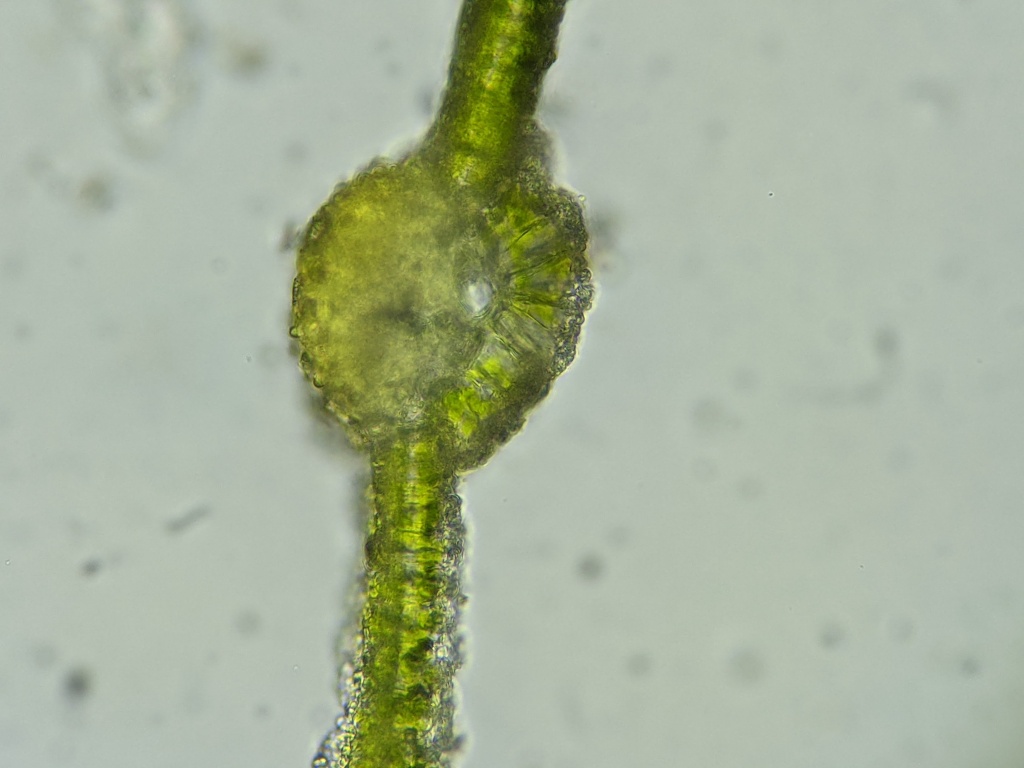Tortula atrovirens
(Sm.) Lindb.Autoicous. Plants green-olive to brownish, 2–5 mm high in loose or dense turves on soil. Asexual propagules absent. Stems (0.5–) 1–3 mm long, simple or branched. Leaves erect-patent to patent when moist, spirally twisted around stem when dry, lingulate to oblong-lingulate, obovate, sometimes elliptic, (0.9–) 1.2–1.9 (–2.4) mm long, 0.4–0.6 mm wide, strongly concave, unistratose; apices obtuse to acute, occasionally apiculate; costae percurrent or excurrent in a smooth, brownish mucro; margins entire or crenulate in apical 1/3–1/2, with up to 6 rows of differentiated cells forming a distinct border; laminal cells in apical half mostly quadrate to rectangular, occasionally oblate or hexagonal, (5–) 7.5–15 μm long, (7.5–) 10–12.5 (–15) μm wide, pluripapillose; laminal cells near base rectangular, sometimes oblate, 15–55 μm long, (12.5–) 15–25 (–27.5) μm wide, smooth. Seta 6–12 mm long, orange to yellowish brown, smooth. Capsule erect, ovoid-cylindric to ovoid or elliptic, straight, 0.9–1.5 mm long. Operculum conic, 0.5–0.7 mm long. Peristome of 32 straight to slightly spirally twisted filaments.
LoM, MuM, Wim, GleP, VVP, VRiv, MSB, RobP, MuF, GipP, OtP, WaP, Gold, CVU, GGr, DunT, NIS, EGU, HSF, OtR. In dry woodland, exposed and often anthopogenic environments like cemeteries, ephemeral drainage lines and chenopod scrub mostly in the western half of the state where widespread, but with a few occurrences in drier areas of the east such as the rain shadow area around Suggan Buggan. All states and territories. Cosmopolitan.
 Spinning
Spinning
